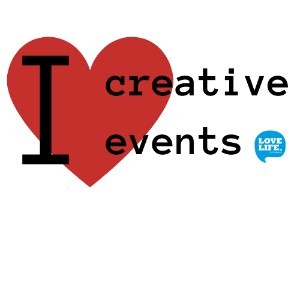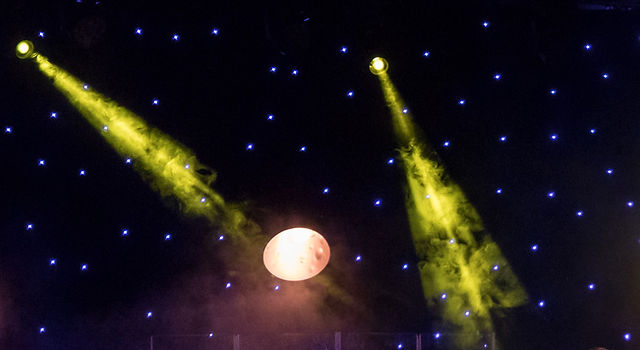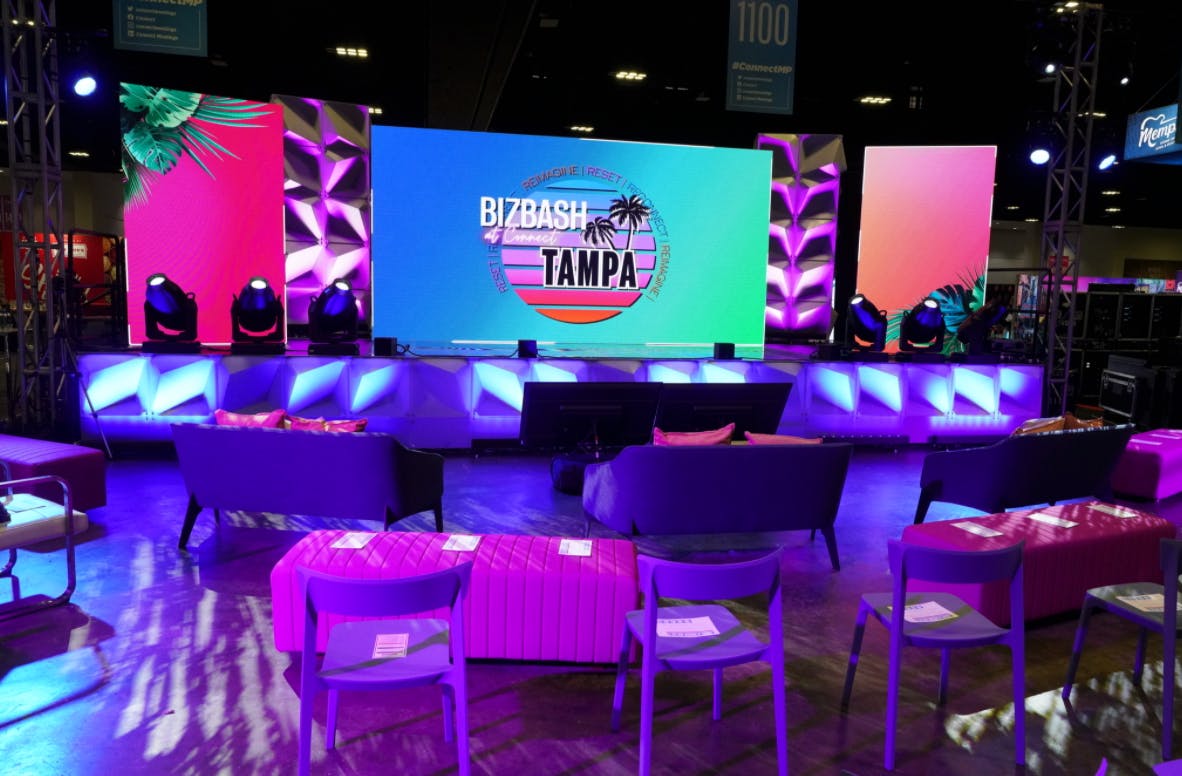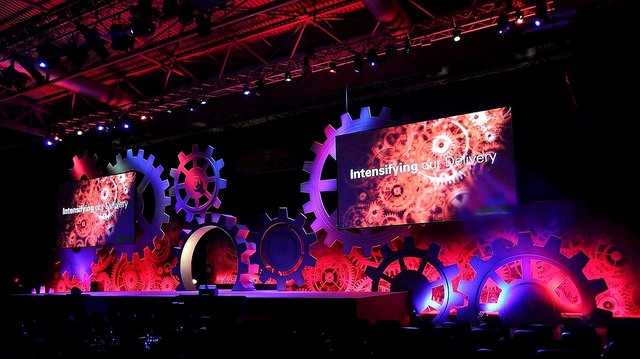In today’s fast-paced and ever-changing world, standing out and making a lasting impression is crucial for any business or organization. This is where creative events come into play. These events go beyond the traditional conferences and meetings, offering unique and immersive experiences that engage audiences and leave a lasting impact. In this blog post, we will explore the power of creative events and how they can unleash innovation, engage audiences, and elevate your brand.
Unleashing Innovation Through Creative Experiences

Creative events are all about pushing boundaries and thinking outside the box. They offer a platform for businesses to showcase their creativity and innovation, whether it’s through product launches, experiential marketing, or interactive workshops. By creating an environment that encourages experimentation and risk-taking, creative events can spark new ideas and inspire attendees to think differently.
Fostering Collaboration and Creativity
One of the key elements of creative events is collaboration. Bringing together people from different backgrounds and industries can lead to unexpected connections and collaborations. This not only enhances the overall experience for attendees but also opens up opportunities for innovation and growth. By breaking down silos and encouraging cross-pollination of ideas, creative events can foster a culture of creativity and collaboration.
Embracing Technology and New Trends
Technology plays a significant role in shaping the landscape of creative events. From virtual and augmented reality to live streaming and social media integration, there are endless possibilities to enhance the attendee experience and create a buzz around the event. Incorporating new trends and technologies not only adds a wow factor to the event but also keeps it relevant and engaging for attendees.
Case Study: SXSW Interactive Festival
The South by Southwest (SXSW) Interactive Festival is a prime example of how technology and creativity can come together to create a one-of-a-kind event. This annual festival in Austin, Texas, brings together the worlds of music, film, and technology, attracting thousands of attendees from around the world. With a focus on innovation and emerging technologies, SXSW has become a hub for networking, learning, and showcasing new ideas and products.
Engaging Audiences with Immersive Creative Events

One of the main goals of any event is to engage and captivate the audience. Creative events take this to the next level by offering immersive experiences that go beyond the traditional conference format. By creating a multisensory experience, attendees are fully immersed in the event, making it more memorable and impactful.
Creating an Emotional Connection
Creative events have the power to evoke emotions and create a sense of connection between the attendees and the brand or organization. By incorporating elements such as storytelling, interactive installations, and sensory experiences, attendees are not only entertained but also emotionally invested in the event. This emotional connection can lead to a stronger brand loyalty and a lasting impact on attendees.
Personalization and Customization
In today’s digital age, personalization is key to engaging audiences. Creative events offer endless opportunities for customization, whether it’s through personalized content, interactive activities, or tailored experiences. By catering to individual preferences and interests, attendees feel more connected to the event and are more likely to participate and engage.
Case Study: Nike’s “The Human Race”
Nike’s “The Human Race” was a global running event that took place in 25 cities around the world simultaneously. What made this event unique was its use of technology to personalize the experience for each participant. Runners were able to track their progress and compete against other runners in real-time, creating a sense of community and competition. The event was a huge success, with over 780,000 participants and a strong emotional connection to the Nike brand.
Crafting Memorable Moments: The Art of Creative Event Design

The design of a creative event is crucial in creating a memorable experience for attendees. From the overall theme and layout to the smallest details, every aspect of the event should be carefully crafted to engage and captivate the audience.
Creating a Cohesive Theme
A well-defined theme is the foundation of any successful creative event. It sets the tone and creates a cohesive experience for attendees. The theme should be reflected in all aspects of the event, from the marketing materials to the decor and activities. This not only creates a memorable experience but also helps to reinforce the brand or organization’s message.
Attention to Detail
The devil is in the details, and this is especially true for creative events. Every element, no matter how small, should be carefully considered and designed to enhance the overall experience. From the lighting and sound to the food and beverages, every detail should contribute to the overall theme and create a seamless and immersive experience for attendees.
Case Study: Coachella Music Festival
Coachella Music Festival is known for its attention to detail and immersive experience. From the art installations and interactive activities to the themed food and beverage options, every aspect of the festival is carefully curated to create a unique and unforgettable experience for attendees. This attention to detail has contributed to the festival’s success, with over 250,000 attendees each year.
Strategic Planning for Successful Creative Events

Behind every successful creative event is a well-thought-out and strategic plan. Without proper planning and execution, even the most creative ideas can fall flat. Here are some key elements to consider when planning a creative event.
Clearly Defined Goals and Objectives
Before diving into the planning process, it’s essential to have a clear understanding of the goals and objectives of the event. Are you looking to launch a new product, build brand awareness, or generate leads? Having a clear goal in mind will help guide the planning process and ensure that all elements of the event align with the desired outcome.
Budgeting and Resource Allocation
Creative events can be costly, and it’s crucial to have a realistic budget in place. This includes not only the cost of venue, catering, and production but also any additional expenses such as technology and entertainment. Proper resource allocation is also essential to ensure that all aspects of the event are executed successfully.
Timeline and Project Management
A timeline is crucial for keeping the planning process on track and ensuring that all tasks are completed on time. It’s also essential to have a project management system in place to delegate tasks, track progress, and communicate with team members. This will help to avoid any last-minute hiccups and ensure a smooth execution of the event.
Case Study: TED Conferences
TED Conferences are known for their well-planned and executed events. Each conference has a clear theme and set of objectives, and the planning process starts months in advance. The team behind TED uses a project management system to keep track of tasks and deadlines, ensuring that each event runs smoothly and meets its goals.
Measuring the Impact of Creative Events: Metrics and Benchmarks
As with any marketing initiative, it’s essential to measure the impact of creative events to determine their success and identify areas for improvement. Here are some key metrics and benchmarks to consider when evaluating the impact of a creative event.
Attendance and Engagement
The number of attendees and their level of engagement during the event are key indicators of its success. This can include metrics such as registration numbers, social media mentions, and survey responses. By tracking these metrics, you can determine the level of interest and engagement in the event.
Return on Investment (ROI)
ROI is a crucial metric for measuring the success of any event. This can include factors such as ticket sales, leads generated, and brand awareness. By comparing the costs of the event to the return, you can determine if the event was a worthwhile investment.
Feedback and Surveys
Collecting feedback from attendees is an excellent way to gauge their satisfaction and identify areas for improvement. This can be done through surveys or by having a feedback station at the event. By analyzing this feedback, you can make adjustments for future events and ensure that attendees have a positive experience.
Case Study: Dreamforce Conference
Salesforce’s annual Dreamforce conference is known for its impressive attendance numbers and high levels of engagement. The company uses various metrics to measure the impact of the event, including registration numbers, social media mentions, and attendee feedback. By tracking these metrics, Salesforce can determine the success of the event and make improvements for future conferences.
Trends and Best Practices in Creative Event Management
The landscape of creative events is constantly evolving, and it’s essential to stay on top of the latest trends and best practices to create a successful event. Here are some current trends and best practices in creative event management.
Sustainability and Social Responsibility
In today’s world, sustainability and social responsibility are becoming increasingly important for businesses and organizations. This is also reflected in the events industry, with more and more events incorporating sustainable practices and giving back to the community. From using eco-friendly materials to partnering with local charities, there are many ways to make your event more socially responsible.
Inclusivity and Diversity
Diversity and inclusivity are crucial for creating an inclusive and welcoming environment for all attendees. This includes not only diversity in terms of race and gender but also diversity of thought and ideas. By embracing diversity and inclusivity, events can foster a culture of innovation and creativity.
Hybrid and Virtual Events
With the rise of technology, hybrid and virtual events have become more popular in recent years. These events offer a mix of in-person and online experiences, allowing for a wider reach and increased engagement. With the current global pandemic, virtual events have become even more prevalent, and it’s likely that they will continue to be a trend in the future.
Case Study: Adobe MAX Conference
Adobe MAX is an annual conference that brings together creatives from around the world to learn, connect, and create. In recent years, the conference has incorporated sustainable practices, such as using eco-friendly materials and offsetting carbon emissions. The event also promotes diversity and inclusivity, with a focus on showcasing diverse voices and perspectives. In 2020, due to the pandemic, the conference was held virtually, allowing for a wider reach and increased engagement.
Leveraging Technology to Elevate Creative Events
As mentioned earlier, technology plays a significant role in shaping the landscape of creative events. Here are some ways that technology can be leveraged to elevate your event and create a more engaging experience for attendees.
Virtual and Augmented Reality
Virtual and augmented reality have become increasingly popular in the events industry. These technologies allow for immersive experiences that go beyond what is possible in the physical world. From virtual product demos to augmented reality scavenger hunts, there are endless possibilities to engage attendees through these technologies.
Live Streaming and Social Media Integration
Live streaming and social media integration allow for real-time engagement with attendees who are unable to attend the event in person. This not only expands the reach of the event but also creates a buzz and excitement around it. By incorporating hashtags and encouraging attendees to share their experiences on social media, you can create a sense of community and increase brand awareness.
Event Apps and Gamification
Event apps have become a popular tool for enhancing the attendee experience. These apps can include features such as personalized schedules, interactive maps, and networking opportunities. Gamification is also becoming more prevalent in events, with activities and challenges that encourage attendees to participate and engage with the event.
Case Study: Google I/O Conference
Google’s annual I/O conference is known for its use of technology to enhance the attendee experience. In 2019, the company introduced a new feature called “Google Lens” that allowed attendees to scan QR codes and access information about the event. The conference also incorporated virtual reality experiences and a mobile app that provided personalized schedules and real-time updates.
Collaboration and Partnerships: The Key to Unforgettable Creative Experiences
Collaboration and partnerships are essential for creating successful creative events. By working with other businesses, organizations, and individuals, you can tap into their expertise and resources to enhance your event.
Partnering with Sponsors and Vendors
Sponsors and vendors can bring valuable resources and expertise to your event. By partnering with them, you can offer unique experiences and activities that may not have been possible otherwise. This can also help to offset some of the costs of the event.
Working with Influencers and Thought Leaders
Influencers and thought leaders can add credibility and reach to your event. By inviting them to speak or participate in the event, you can attract a wider audience and create buzz around the event. These individuals can also provide valuable insights and perspectives on industry trends and best practices.
Collaborating with Other Businesses and Organizations
Collaborating with other businesses and organizations can lead to unexpected connections and opportunities. By working together, you can create a more comprehensive and impactful event that benefits all parties involved. This can also help to expand your network and reach new audiences.
Case Study: Airbnb’s “Night At” Campaign
Airbnb’s “Night At” campaign is an excellent example of collaboration and partnership in action. The company partnered with various museums and cultural institutions around the world to offer unique and immersive experiences for guests. This not only helped to promote the brand but also provided valuable exposure for the partner organizations.
The Future of Creative Events: Exploring New Horizons and Possibilities
The events industry is constantly evolving, and it’s essential to stay ahead of the curve to create successful events. Here are some potential future trends and possibilities for creative events.
Virtual and Hybrid Events
As mentioned earlier, virtual and hybrid events are likely to continue being a trend in the future. With advancements in technology, these events can become even more immersive and engaging, offering new possibilities for creativity and innovation.
Sustainability and Social Responsibility
As consumers become more environmentally conscious, sustainability and social responsibility will continue to be important factors in event planning. This may include using eco-friendly materials, reducing waste, and giving back to the community.
Personalization and Customization
Personalization and customization will continue to be crucial for engaging audiences and creating memorable experiences. With advancements in technology, personalization can become even more sophisticated, allowing for tailored experiences for each attendee.
Conclusion
Creative events have the power to unleash innovation, engage audiences, and elevate your brand. By fostering collaboration and creativity, embracing technology and new trends, and strategically planning and measuring the impact of events, businesses and organizations can create unforgettable experiences that leave a lasting impression on attendees. As we look towards the future, it’s essential to stay on top of trends and best practices and continue pushing the boundaries of what is possible with creative events.
